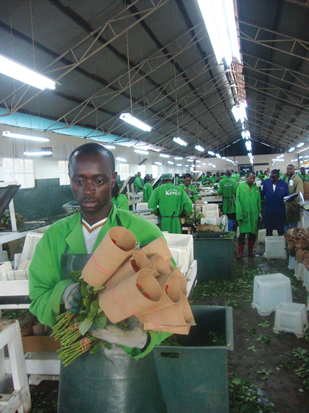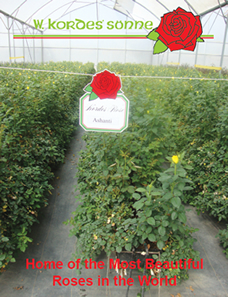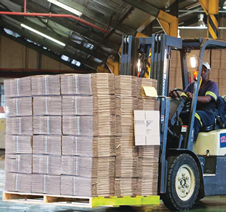Introduction Botrytis is one of the most damaging pathogens with stems, leaves, flowers, fruit and seedlings all being potential victims. Many growers are familiar with the symptoms of Botrytis, but for some, the first encounter with this pathogen results in severe plants losses therefore early detection and control are vital if the disease is to be prevented from rapidly spreading though a crop.
Botrytis is one of the most damaging pathogens with stems, leaves, flowers, fruit and seedlings all being potential victims. Many growers are familiar with the symptoms of Botrytis, but for some, the first encounter with this pathogen results in severe plants losses therefore early detection and control are vital if the disease is to be prevented from rapidly spreading though a crop.
While Botrytis is a formidable pathogen, it is also the same fungi which is employed by some wine makers and was even given the name ‘The Nobel rot’ for its ability to concentrate sugars and impart a particular flavor to late harvest grapes. Wine makers in many areas of the world make use of Botrytis infection of their grapes to produce a sweet, high quality wine, which commands high prices. Despite this beneficial use of Botrytis, it is a disease, which plagues commercial and hobbyist growers alike, and one that affects virtually all of the crops we grow hydroponically.

 Over 20% of the flowers shipped by growers never reach the final consumer in the export market because they are lost or damaged during the various stages of the distribution chain. Losses can be reduced by ensuring more careful handling, better temperature regulation, attention to phytosanitary requirements and the use of suitable preservation agents. Such measures may be inadequate and even fruitless, however, if not combined with appropriate export packaging.
Over 20% of the flowers shipped by growers never reach the final consumer in the export market because they are lost or damaged during the various stages of the distribution chain. Losses can be reduced by ensuring more careful handling, better temperature regulation, attention to phytosanitary requirements and the use of suitable preservation agents. Such measures may be inadequate and even fruitless, however, if not combined with appropriate export packaging. Kenyan roses are ranked among the best in the world and this is usually due to the high quality varieties produced by rose breeders with local branches. One such branch is Kordes Roses East Africa situated in Karen, Nairobi and managed by Mr Bas Smit. This is a branch of W. Kordes Söhne based in Hamburg, Germany, which celebrated its 125th Anniversary two years ago. They have branches located in the cut flower production centres of The Netherlands and Kenya, as well as agents located throughout the world. Kordes’ novelties are tried and grown under local conditions and test marketed in the world’s flower markets.
Kenyan roses are ranked among the best in the world and this is usually due to the high quality varieties produced by rose breeders with local branches. One such branch is Kordes Roses East Africa situated in Karen, Nairobi and managed by Mr Bas Smit. This is a branch of W. Kordes Söhne based in Hamburg, Germany, which celebrated its 125th Anniversary two years ago. They have branches located in the cut flower production centres of The Netherlands and Kenya, as well as agents located throughout the world. Kordes’ novelties are tried and grown under local conditions and test marketed in the world’s flower markets. The GreenCHAINge consortium, made up of trading companies and research institutions, was satisfied with the results of the first sea transport of roses in 2014. The practical test involved transporting both large and small-flowered roses between the port cities of Mombasa and Antwerp. Conditions in the air-conditioned reefer containers (such as the required low temperature and relative humidity) were controlled remotely.
The GreenCHAINge consortium, made up of trading companies and research institutions, was satisfied with the results of the first sea transport of roses in 2014. The practical test involved transporting both large and small-flowered roses between the port cities of Mombasa and Antwerp. Conditions in the air-conditioned reefer containers (such as the required low temperature and relative humidity) were controlled remotely. The company provides a total packaging solution from design to delivery, with products ranging from small pizza boxes to large flower cartons.
The company provides a total packaging solution from design to delivery, with products ranging from small pizza boxes to large flower cartons. It’s yet another season for horticulture stakeholders and its affiliates. The rare occasion looks ‘glossy green and rosy scented’ but only for the sake of business attributed to the fast growing and highly lucrative floricultural sector.
It’s yet another season for horticulture stakeholders and its affiliates. The rare occasion looks ‘glossy green and rosy scented’ but only for the sake of business attributed to the fast growing and highly lucrative floricultural sector.